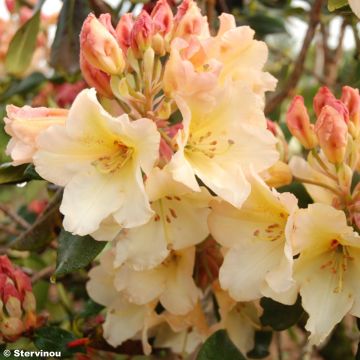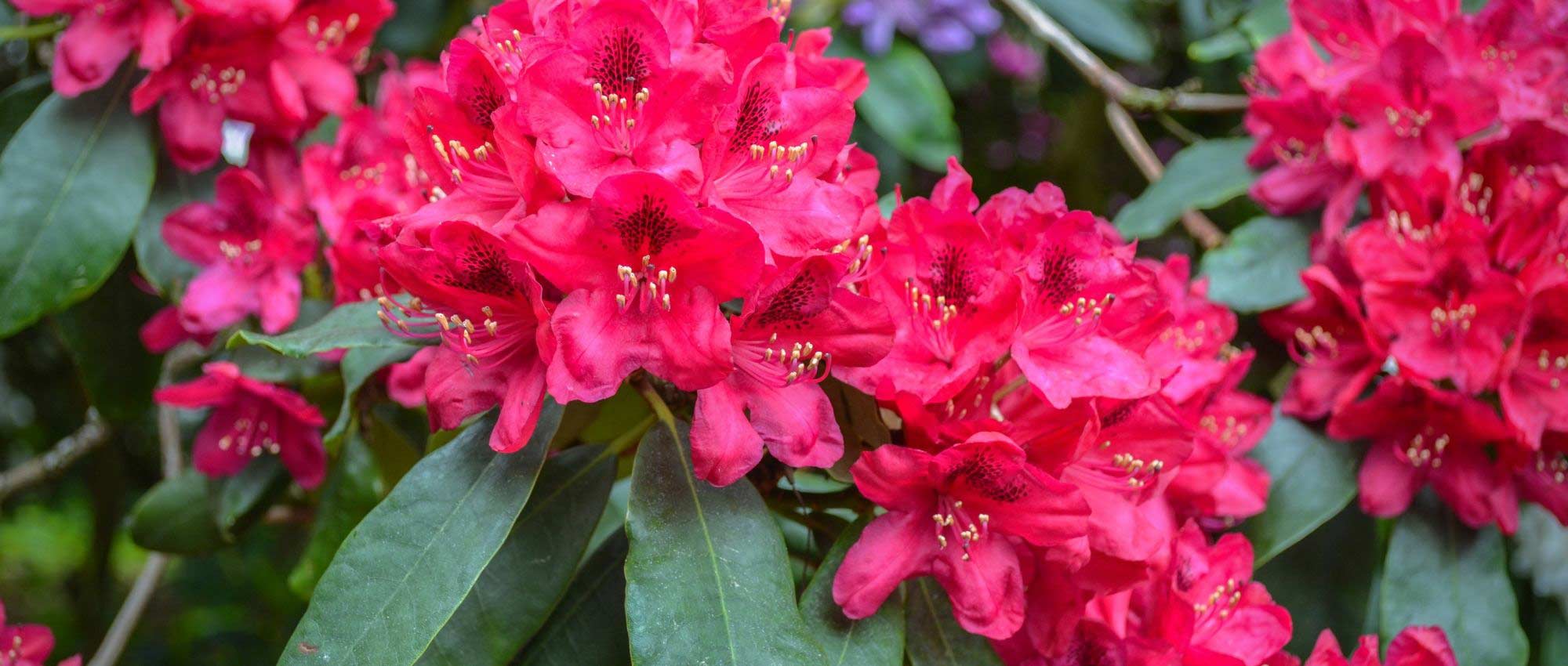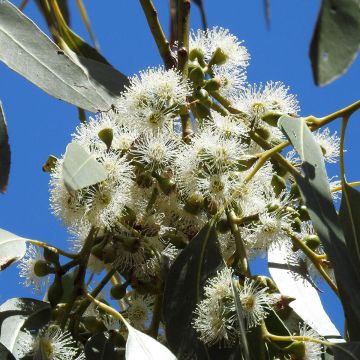

Rhododendron ponticum


Rhododendron ponticum
Rhododendron ponticum
Rhododendron ponticum
Pontic Rhododendron
2 beautiful pots, vigorous plants, nice height. I highly recommend.
josiane, 12/10/2024
Special offer!
Receive a €20 voucher for any order over €90 (excluding delivery costs, credit notes, and plastic-free options)!
1- Add your favorite plants to your cart.
2- Once you have reached €90, confirm your order (you can even choose the delivery date!).
3- As soon as your order is shipped, you will receive an email containing your voucher code, valid for 3 months (90 days).
Your voucher is unique and can only be used once, for any order with a minimum value of €20, excluding delivery costs.
Can be combined with other current offers, non-divisible and non-refundable.
Home or relay delivery (depending on size and destination)
Schedule delivery date,
and select date in basket
This plant carries a 24 months recovery warranty
More information
We guarantee the quality of our plants for a full growing cycle, and will replace at our expense any plant that fails to recover under normal climatic and planting conditions.

Would this plant suit my garden?
Set up your Plantfit profile →
Description
Rhododendron ponticum, also known as Rhododendron pontique or Black Sea Rhododendron, has become invasive in the UK, yet it is paradoxically rare in its original, much more southern territories. It is a particularly vigorous botanical species, and is highly ornamental with its springtime violet flowering. It is hardy and easy to grow in well-drained but moist soil, even slightly calcareous. Its cultivation is worth trying in regions less favourable to its natural spread, for example in large hedges or at the back of flower beds.
Rhododendrons belong to the Ericaceae family. They prefer humid climates and soils devoid of limestone, tending to the acidic. Rhododendron ponticum is a large-growing botanical species native to the Iberian Peninsula (Southwest Spain and South Portugal) as well as Turkey. Its distribution range extends to Georgia and Lebanon. It is present on the shores of the Black Sea where it is also endangered, surviving only as a relict population in Portugal where reintroduction efforts are being made. In its original territories, Rhododendron ponticum grows in wooded and often mountainous regions, up to 2,500 m (8,202 ft) in altitude.
Introduced to the UK and Europe where it was frequently planted in gardens, parks, and even directly in forests to encourage the presence of game, this Rhododendron (sometimes hybridised) has naturalised to the point of being classified today as an invasive species and harmful to local flora and fauna. This phenomenon is mainly observed in acidic soil and under mild and humid climates such as those found in Ireland, Scotland, Brittany, Normandy, Aveyron, Charentes. This Rhododendron ponticum has been crossed with other species to produce some of our most beautiful and resistant rhododendrons, but without invasive characteristics.
The Black Sea Rhododendron forms a true small tree or large bush, well-branched, reaching over 6 m (19.7 ft) in height and 5 m (16.4 ft) in width under optimal conditions, but it will remain more modest in size (around 4 m or 13.1 ft) if the growing conditions are less favourable. Its growth habit will be denser when the plant is exposed to light. Its branches bear long evergreen leaves that are oblong or lanceolate, shining dark green, measuring 6 cm to 18 cm (2.4 in to 7.1 in) in length. The generous flowering occurs in May-June, and can extend until the end of summer depending on the climate. It only occurs on plants aged 10 to 12 years. At the tips of the branches, clusters of 10 to 15 trumpet-shaped flowers measuring 5 cm (2 in) in diameter appear, in beautiful shades of violet, more or less vibrant or pastel, purple, mauve, or pink. The throat of the flowers is often speckled with yellow, ochre, or brown. This fragrance-free flowering, however, is nectar-producing and attractive to bees. After pollination by these insects, woody capsules form, containing numerous fine seeds dispersed by the wind. The lower branches of this Rhododendron root themselves when they touch the ground, through spontaneous layering. While it prefers acidic and sandy soils (pH between 4 and 6), Rhododendron ponticum is relatively tolerant and will accept loamy, neutral, or even slightly calcareous soils. Highly resistant to cold (down to -18° C or 0° F), it can withstand heat (up to 40° C or 104° F). However, it dislikes dry soils, especially when young. Its root system remains shallow and is sensitive to competition from other plants.
For the reasons mentioned above, it is preferable to adopt this splendid rhododendron in regions less favourable to its natural spread. As it is relatively tolerant to soil and climate, it will adapt without becoming aggressive to any well-drained garden soil, properly prepared and amended with ericaceous soil and coarse sand. Rhododendron ponticum can be used in the back of flower beds or in large hedges, in the company of other ericaceous plants or more classically with beautiful evergreen shrubs such as Eleagnus ebbingei, Portuguese Laurel, large Photinia, Viburnum rhytidophyllum, for example. It can be combined with magnolias and Japanese maples with green or purple foliage.
Rhododendron ponticum in pictures




Plant habit
Flowering
Foliage
Botanical data
Rhododendron
ponticum
Ericaceae
Pontic Rhododendron
Mediterranean
Other Large Rhododendrons
View all →Planting and care
Plant in a sunny, semi-shaded, or even shady position in warm climates, protected from cold and drying winds. Choose a fresh, humus-rich, and light soil, with a tendency towards acidity, neutrality, or even slight alkalinity. It does not tolerate strongly alkaline soils or heavy soils saturated with water in winter, and it fears dry soils, especially when young. However, it can withstand hot summers. Dig a hole three times larger than the pot. Soak the root ball in non-alkaline water and plant the bush at the neck level, in a mixture composed of 1/4 turf, leaf compost, gravel or pumice, and loam. Water thoroughly and keep the soil moist in summer.
Azaleas and Rhododendrons have a shallow root system. Therefore, they are sensitive to long periods of drought. That is why soil enriched with humus and abundant watering during dry periods is recommended. In addition, this root system is not very strong, which is why it is essential to lighten heavy soils with draining materials (gravel, pumice, clay pellets) when planting. Apply a mulch of shredded pine bark at the base of the bush every spring to maintain soil moisture while keeping an acidic pH.
Maintenance consists of removing faded flowers in summer and cleaning dead branches. Azaleas and Rhododendrons can sometimes be attacked by weevils that eat the edges of the leaves and rootlets, as well as the famous "Rhododendron beetle," which does not usually cause significant damage. Yellowing of the leaves (chlorosis) in Rhododendron indicates poor assimilation of iron in the soil and causes premature plant death. While limestone is often the cause, poorly drained soil or a deeply planted root ball can also explain the phenomenon.
Rhododendron ponticum fears Phytophthora, a fungal disease that mainly occurs in warm and humid soil and poorly drained soil.
Planting period
Intended location
Care
Planting & care advice
-
, onOrder confirmed
Reply from on Promesse de fleurs
Similar products
Haven't found what you were looking for?
Hardiness is the lowest winter temperature a plant can endure without suffering serious damage or even dying. However, hardiness is affected by location (a sheltered area, such as a patio), protection (winter cover) and soil type (hardiness is improved by well-drained soil).

Photo Sharing Terms & Conditions
In order to encourage gardeners to interact and share their experiences, Promesse de fleurs offers various media enabling content to be uploaded onto its Site - in particular via the ‘Photo sharing’ module.
The User agrees to refrain from:
- Posting any content that is illegal, prejudicial, insulting, racist, inciteful to hatred, revisionist, contrary to public decency, that infringes on privacy or on the privacy rights of third parties, in particular the publicity rights of persons and goods, intellectual property rights, or the right to privacy.
- Submitting content on behalf of a third party;
- Impersonate the identity of a third party and/or publish any personal information about a third party;
In general, the User undertakes to refrain from any unethical behaviour.
All Content (in particular text, comments, files, images, photos, videos, creative works, etc.), which may be subject to property or intellectual property rights, image or other private rights, shall remain the property of the User, subject to the limited rights granted by the terms of the licence granted by Promesse de fleurs as stated below. Users are at liberty to publish or not to publish such Content on the Site, notably via the ‘Photo Sharing’ facility, and accept that this Content shall be made public and freely accessible, notably on the Internet.
Users further acknowledge, undertake to have ,and guarantee that they hold all necessary rights and permissions to publish such material on the Site, in particular with regard to the legislation in force pertaining to any privacy, property, intellectual property, image, or contractual rights, or rights of any other nature. By publishing such Content on the Site, Users acknowledge accepting full liability as publishers of the Content within the meaning of the law, and grant Promesse de fleurs, free of charge, an inclusive, worldwide licence for the said Content for the entire duration of its publication, including all reproduction, representation, up/downloading, displaying, performing, transmission, and storage rights.
Users also grant permission for their name to be linked to the Content and accept that this link may not always be made available.
By engaging in posting material, Users consent to their Content becoming automatically accessible on the Internet, in particular on other sites and/or blogs and/or web pages of the Promesse de fleurs site, including in particular social pages and the Promesse de fleurs catalogue.
Users may secure the removal of entrusted content free of charge by issuing a simple request via our contact form.
The flowering period indicated on our website applies to countries and regions located in USDA zone 8 (France, the United Kingdom, Ireland, the Netherlands, etc.)
It will vary according to where you live:
- In zones 9 to 10 (Italy, Spain, Greece, etc.), flowering will occur about 2 to 4 weeks earlier.
- In zones 6 to 7 (Germany, Poland, Slovenia, and lower mountainous regions), flowering will be delayed by 2 to 3 weeks.
- In zone 5 (Central Europe, Scandinavia), blooming will be delayed by 3 to 5 weeks.
In temperate climates, pruning of spring-flowering shrubs (forsythia, spireas, etc.) should be done just after flowering.
Pruning of summer-flowering shrubs (Indian Lilac, Perovskia, etc.) can be done in winter or spring.
In cold regions as well as with frost-sensitive plants, avoid pruning too early when severe frosts may still occur.
The planting period indicated on our website applies to countries and regions located in USDA zone 8 (France, United Kingdom, Ireland, Netherlands).
It will vary according to where you live:
- In Mediterranean zones (Marseille, Madrid, Milan, etc.), autumn and winter are the best planting periods.
- In continental zones (Strasbourg, Munich, Vienna, etc.), delay planting by 2 to 3 weeks in spring and bring it forward by 2 to 4 weeks in autumn.
- In mountainous regions (the Alps, Pyrenees, Carpathians, etc.), it is best to plant in late spring (May-June) or late summer (August-September).
The harvesting period indicated on our website applies to countries and regions in USDA zone 8 (France, England, Ireland, the Netherlands).
In colder areas (Scandinavia, Poland, Austria...) fruit and vegetable harvests are likely to be delayed by 3-4 weeks.
In warmer areas (Italy, Spain, Greece, etc.), harvesting will probably take place earlier, depending on weather conditions.
The sowing periods indicated on our website apply to countries and regions within USDA Zone 8 (France, UK, Ireland, Netherlands).
In colder areas (Scandinavia, Poland, Austria...), delay any outdoor sowing by 3-4 weeks, or sow under glass.
In warmer climes (Italy, Spain, Greece, etc.), bring outdoor sowing forward by a few weeks.



























































